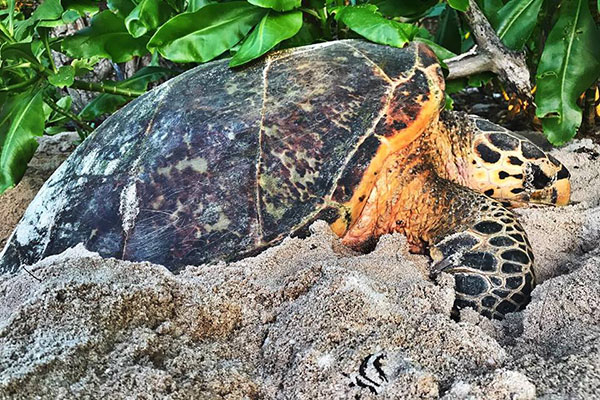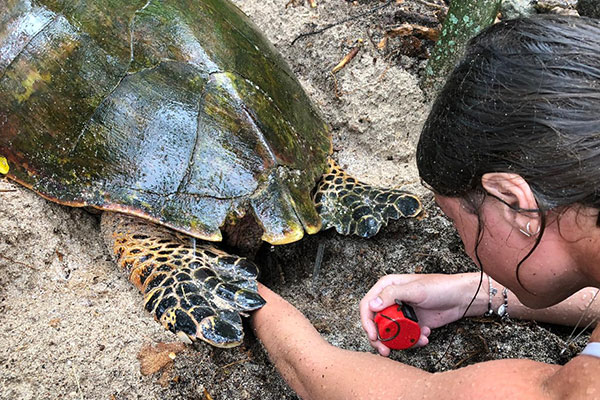Hawksbill turtles (Eretmochelys imbricata) are listed as Critically Endangered under the IUCN Red List due to poaching, loss or degradation of nesting habitat, and by-catch from the fishing industry. The largest population of Hawksbill turtle remaining in the Western Indian Ocean occurs in Seychelles, where an estimated 1,230-1,740 females nested annually in the early 1980s. Since then, however, populations have declined due to widespread harvesting of nesting females during the 30 years prior to 1994, when a total legal ban on turtle harvest was implemented. An exception to the downward trend is the population at Cousin Island.
Turtle monitoring has been in operation on Cousin since 1972. It has therefore one of the longest running monitoring programmes for Hawksbill turtles in the world.


The Hawksbill nesting season begins in October and lasts to March. However, the peak nesting activity occurs from November to January. During this period on Cousin breeding females emerge to lay their eggs and this is when we are able to monitor them closely. Each year a team led by the Science Officer undertake the huge task of recording each emergence that is made and tagging new turtles. The type of nesting activity, the track and shell measurements, the tag numbers, the position and time of laying are all recorded. This is added each year to the long-term data set that provides important information of population trends. Since the Island became a reserve the nesting population has increased 8-fold and Cousin is seen as a global conservation success story for the Hawksbill turtle.
For information on how you can be a part of this project please see the Conservation Boot Camp page.

